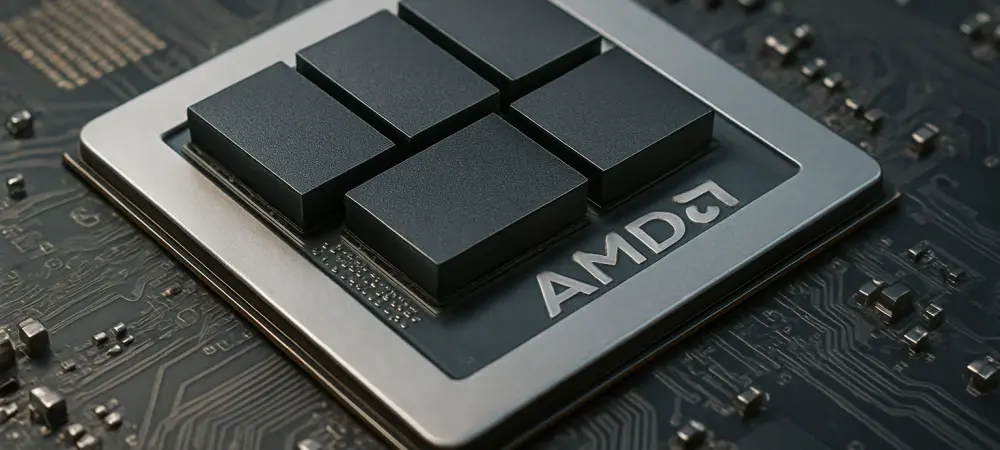I’m thrilled to sit down with Dominic Jainy, a seasoned IT professional whose deep knowledge in artificial intelligence, machine learning, and blockchain offers a unique perspective on cutting-edge hardware innovations. Today, we’re diving into AMD’s groundbreaking patent for a multi-chip DRAM approach that promises to revolutionize memory performance. In this conversation, we’ll explore the intricacies of this high-bandwidth DIMM technology, its potential impact on AI and other demanding workloads, and how it fits into AMD’s legacy of memory innovation. Let’s get started.
Can you walk us through the core concept of AMD’s latest patent aimed at boosting memory performance?
Absolutely. AMD’s newest patent focuses on a multi-chip DRAM approach that significantly enhances memory bandwidth without requiring faster DRAM silicon. The central idea is to rethink the logic on the memory module itself, introducing what they call a ‘high-bandwidth DIMM’ or HB-DIMM. By optimizing how data is managed on the module with components like register/clock drivers and data-buffer chips, they’ve found a way to double the bandwidth output, which is a game-changer for high-performance computing.
How does this HB-DIMM differ from traditional DRAM setups in terms of design and functionality?
Unlike conventional DRAM designs that often rely on silicon advancements for performance gains, HB-DIMM shifts the focus to the memory module’s architecture. It incorporates specialized components like the register/clock driver, or RCD, and data-buffer chips to streamline data flow. These elements work together to manage and accelerate data transfer between the memory and the processor, offering a substantial leap in efficiency over traditional DIMM configurations.
Can you explain how AMD achieves double the memory bandwidth without upgrading the DRAM silicon itself?
It’s a clever approach. The patent utilizes re-timing and multiplexing techniques to enhance data throughput. Essentially, the RCD and data buffers combine two streams of normal-speed DRAM data into a single, faster stream delivered to the processor. This results in a jump from 6.4 Gb/s to 12.8 Gb/s per pin, effectively doubling the bandwidth without needing to push the DRAM silicon beyond its current limits. It’s more about smart data handling than raw hardware upgrades.
What types of workloads stand to benefit most from this kind of memory performance boost?
This technology is particularly exciting for bandwidth-intensive workloads like artificial intelligence and machine learning tasks. AI models, especially those running complex computations or processing massive datasets, crave high memory bandwidth to keep up with data demands. Beyond AI, this could also impact areas like high-performance computing, gaming, and data analytics—any application where rapid data access is critical to performance.
The patent highlights a specific implementation for APUs and integrated GPUs. Can you elaborate on how this works?
Certainly. For APUs and integrated GPUs, AMD’s design introduces a dual-memory approach with two distinct interfaces: a standard DDR5 PHY for a larger memory pool and a specialized HB-DIMM PHY for faster data movement. This setup is tailored to handle quick bursts of data, which is ideal for on-device AI tasks where low latency and high throughput are essential. It allows APUs to manage AI workloads more efficiently right on the chip, enhancing responsiveness.
What potential challenges or drawbacks do you foresee with the HB-DIMM technology?
One notable challenge is the increased power consumption that comes with driving higher memory bandwidth. Pushing data at these speeds requires more energy, which could strain system resources. Additionally, this uptick in power draw often translates to more heat, so effective cooling solutions will be crucial. Without proper thermal management, performance or system stability could be compromised, especially in compact or densely packed setups.
Given AMD’s history in memory innovation, how does this patent align with their broader expertise in the field?
AMD has long been a frontrunner in memory technology, with significant contributions like their collaboration on High Bandwidth Memory, or HBM. Their expertise in optimizing data pathways and pushing performance boundaries is evident in the HB-DIMM patent. This new approach builds on their legacy by focusing on module-level innovation rather than just silicon advancements, showcasing their ability to think outside the box and address modern computing challenges in unique ways.
What is your forecast for the future of memory technologies like HB-DIMM in shaping computing trends?
I believe technologies like HB-DIMM are poised to play a pivotal role in the evolution of computing, especially as we move deeper into AI-driven and data-centric applications. The ability to double bandwidth without overhauling core hardware opens doors for more accessible, high-performance systems. Over the next few years, I expect to see broader adoption in servers, edge devices, and even consumer hardware, as the demand for faster, more efficient memory solutions continues to grow. It’s an exciting time for memory tech, and innovations like this could redefine performance standards across industries.

